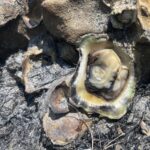Seekoraal is the Afrikaans term for the Salicornia natalensis plant, which belonged to the Sacocornia taxonomic genus before being reclassified under the Salicornia genus in 2017. Salicornia plants are succulent, halophytic (salt-tolerant) flowering plants in the Amaranthaceae family. They thrive in salt marshes, on beaches, and amidst mangroves. There are 53 known Salicornia species native to North America, Europe, Central Asia, and Southern Africa.
In Southern Africa, these plants are commonly known as Seekoraal and Pickleweed. Historically, they were pickled and consumed as a salad with vinegar and olive oil dressing to prevent scurvy. In the United States, they can be found in some grocery stores under the names Sea Beans or Sea Asparagus, while in Britain, they are referred to as Marsh Samphire or Glasswort.
As the S. natalensis species exclusively occurs in the Southern African region, we will use the most prevalent name for these plants in that area: Seekoraal.

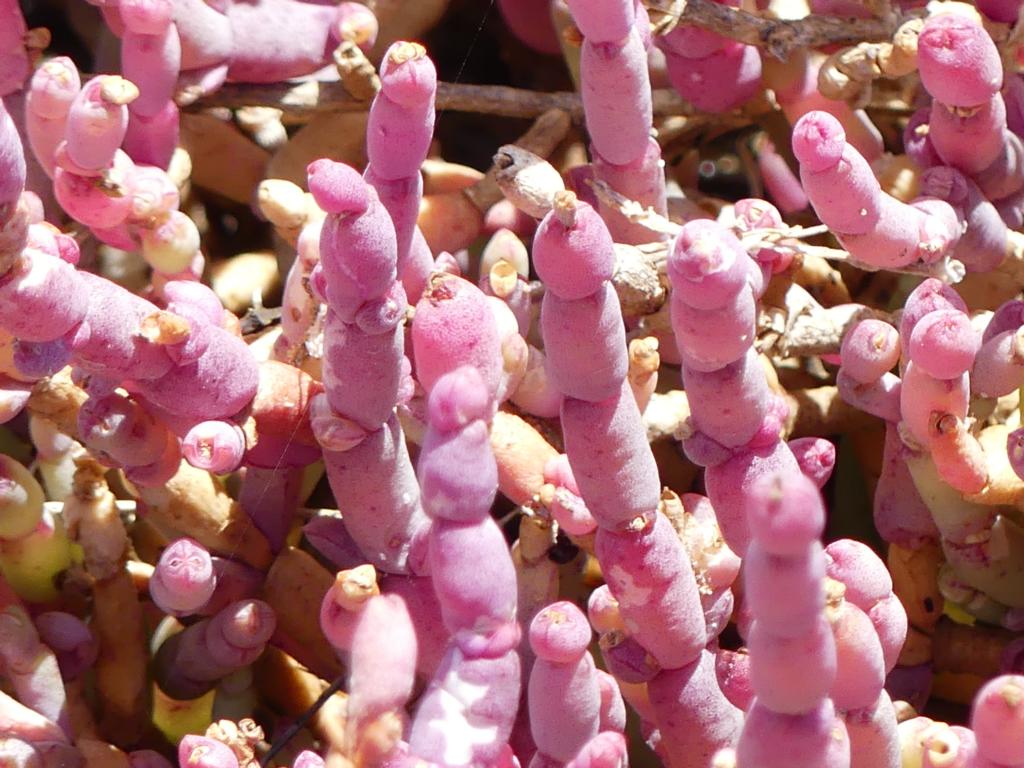
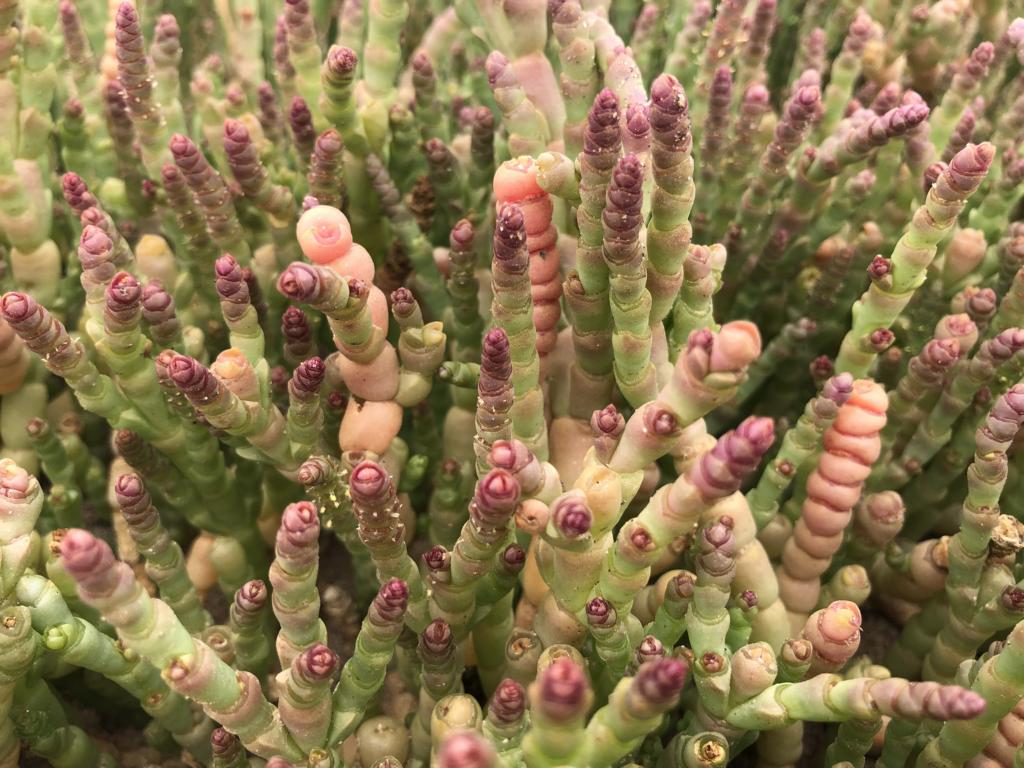
Distribution of Seekoraal plants
Beachcombers can collect Salicornia natalensis from almost all mudflats found in salt- or brackish water lagoons within the region, as long as these mudflats are not directly affected by wave action.

Sakicornia natalensis plants are distributed from Namibia around the Cape up to KwaZulu-Natal. This map is copyright of GBIF (Global Biodata Information Facility), which can be accessed here.
Famous are the large and colorful Salicornia fields at the West Coast National Park in South Africa.

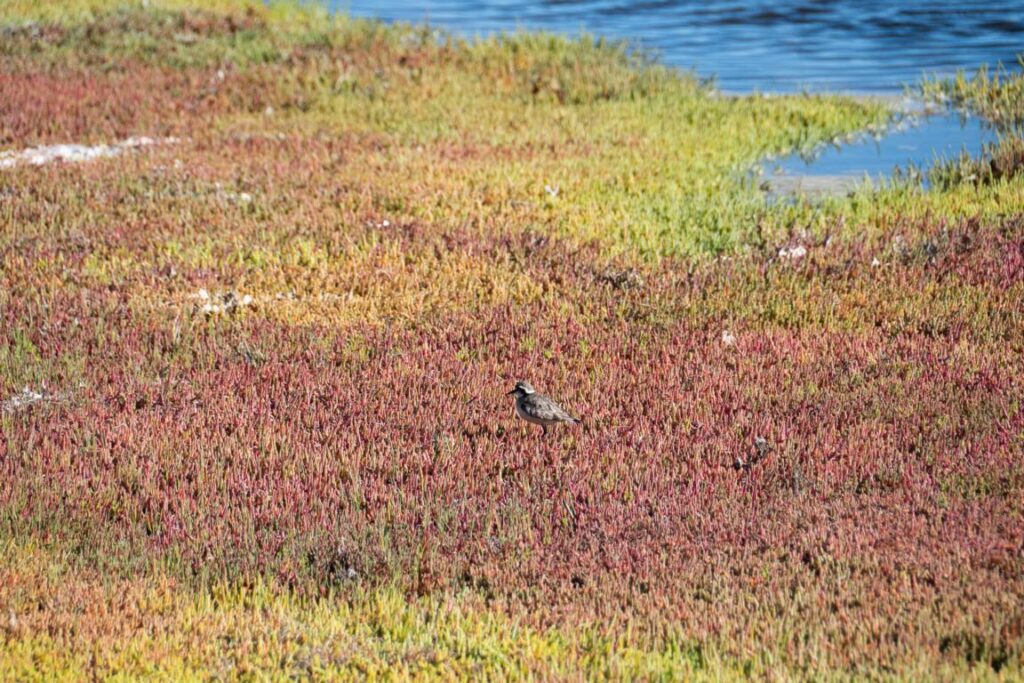
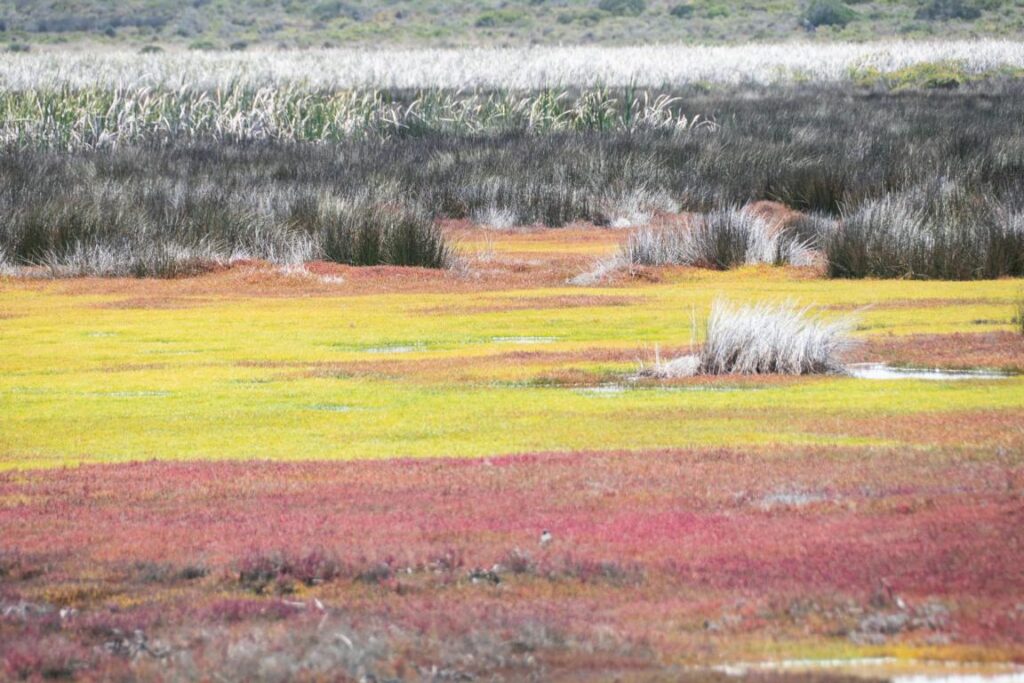
Plant description
All Salicornia species are characterized as small annual herbs that grow erectly. Their stems are succulent, hairless, and segmented. The leaves are positioned opposite each other and are notably reduced, taking the form of small fleshy scales, which contribute to the plant’s segmented appearance. As the stems age, they retain shape due to a cellulose strand running through the center.
Seekoraal’s color can vary, displaying shades of yellow, green, red, or a combination of these colors simultaneously and in the same location.

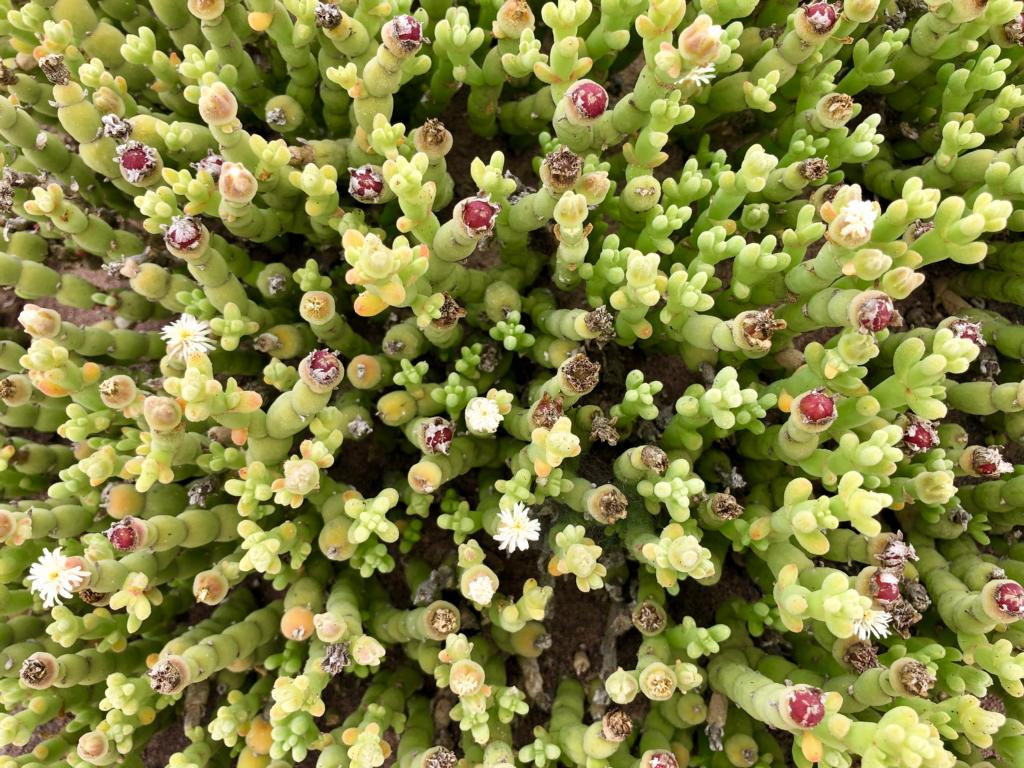
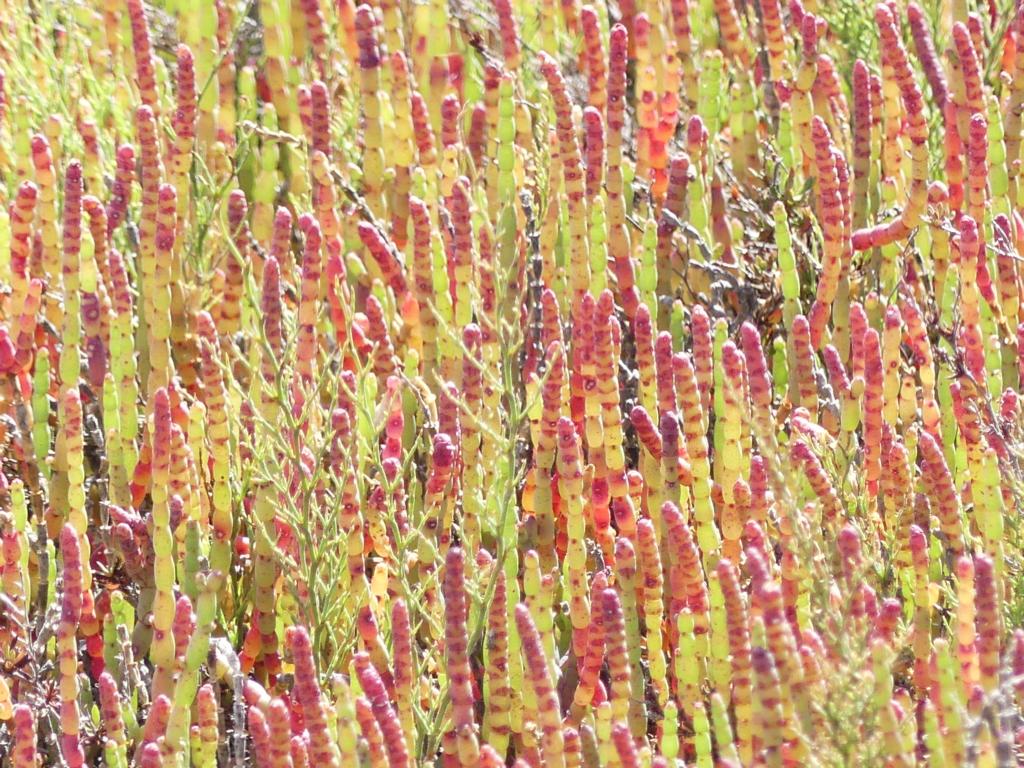
Uses of Salicornia natalensis
Seekoraal offers versatility in consumption, as it can be enjoyed both cooked and raw. As mentioned earlier, pickling Seekoraal and using them in salads is popular. However, there are other culinary approaches to relish this plant.
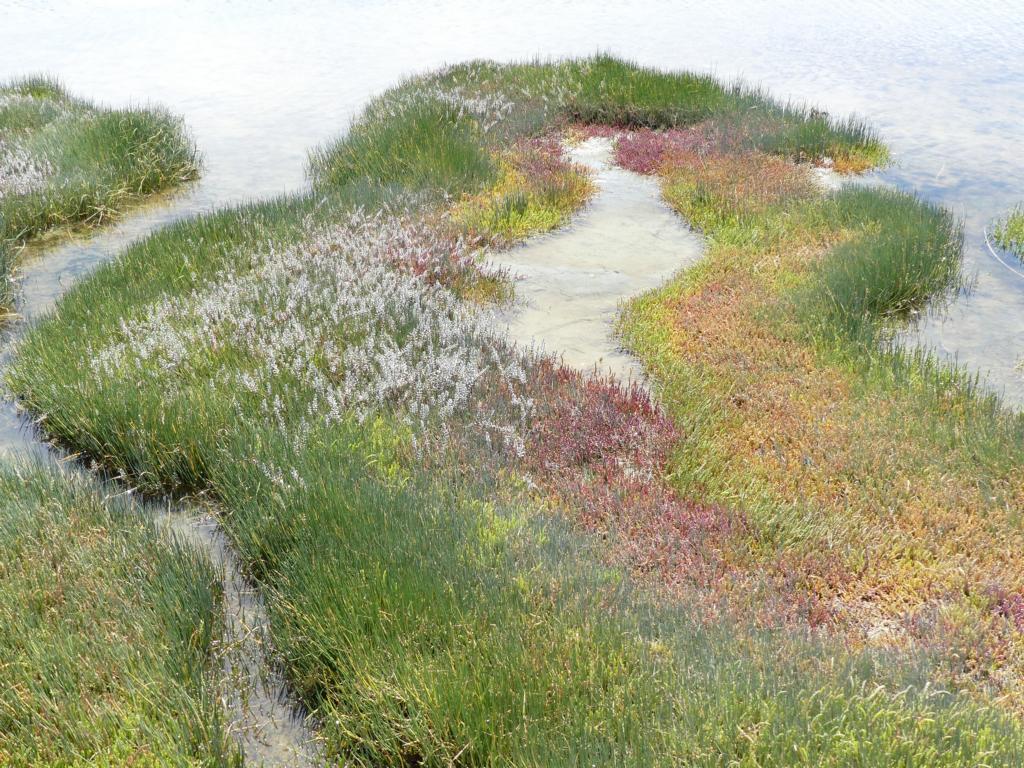
Seekoraal is often blanched briefly in fine cuisine and immediately chilled in cold water to preserve its natural color. Boiling for a longer duration will cause the stems to turn greenish-grey. After blanching, Seekoraal stems maintain a delightful crunchiness and deliver an explosion of salty and bitter flavors in the mouth. Their unique taste pairs exceptionally well with various fish and seafood dishes.

In India, a Salicornia species produced vegetable salt in 2003. See here. They claim: ‘…While sea salt is predominantly sodium chloride (NaCl), vegetable salt contains salts of potassium, calcium, magnesium, and some micronutrients like iron.
Indeed, a product known as ‘Green Salt’ can be derived from thoroughly dried Salicornia sp. stems. The dried stems are crushed using a mortar and pestle to create it. Similar to Indian vegetable salt, green salt has a taste similar to regular sea salt but has a considerably lower sodium content. This makes it an attractive alternative for those seeking to reduce their sodium intake while still enjoying the familiar taste of salt in their dishes.

Nutritional value of Seekoraal plants
According to this source from the US, a non-disclosed Salicornia species (Sea Bean, most probably Salicornia maritima) contains the following:
- Calories: 113.3 / 100 g wet mass
- Sodium: 93 mg
- Glucose: 2.7 g
- Protein: 13.3 g
- Plus, high contents of vitamin A and calcium
Seekoraal’s appeal lies more in its culinary sensation, offering a delightful combination of crunchiness and saltiness rather than being primarily valued for its nutritional content. However, it does serve as a healthy substitute for traditional sea salt as a condiment. Seekoraal contains approximately 4% sodium, significantly lower than the sodium content found in sea salt, which typically contains around 40% sodium. According to this source, 100g of sea salt contains approximately 38,700 mg of sodium.
Lessons learned about Seekoraal:
- Salicornia natalensis can be found in Namibia over the Cape and up to KwaZulu-Natal.
- Its common names include Seekoraal, pickleweed, glasswort, sea bean, sea asparagus, and samphire.
- S. natalensis fields are visually pleasing due to their expansive nature and varied colorations throughout the year.
- The plant complements fish and seafood dishes exceptionally well.
- From the dried stems, a healthy, low-sodium-containing salt can be produced.
.




